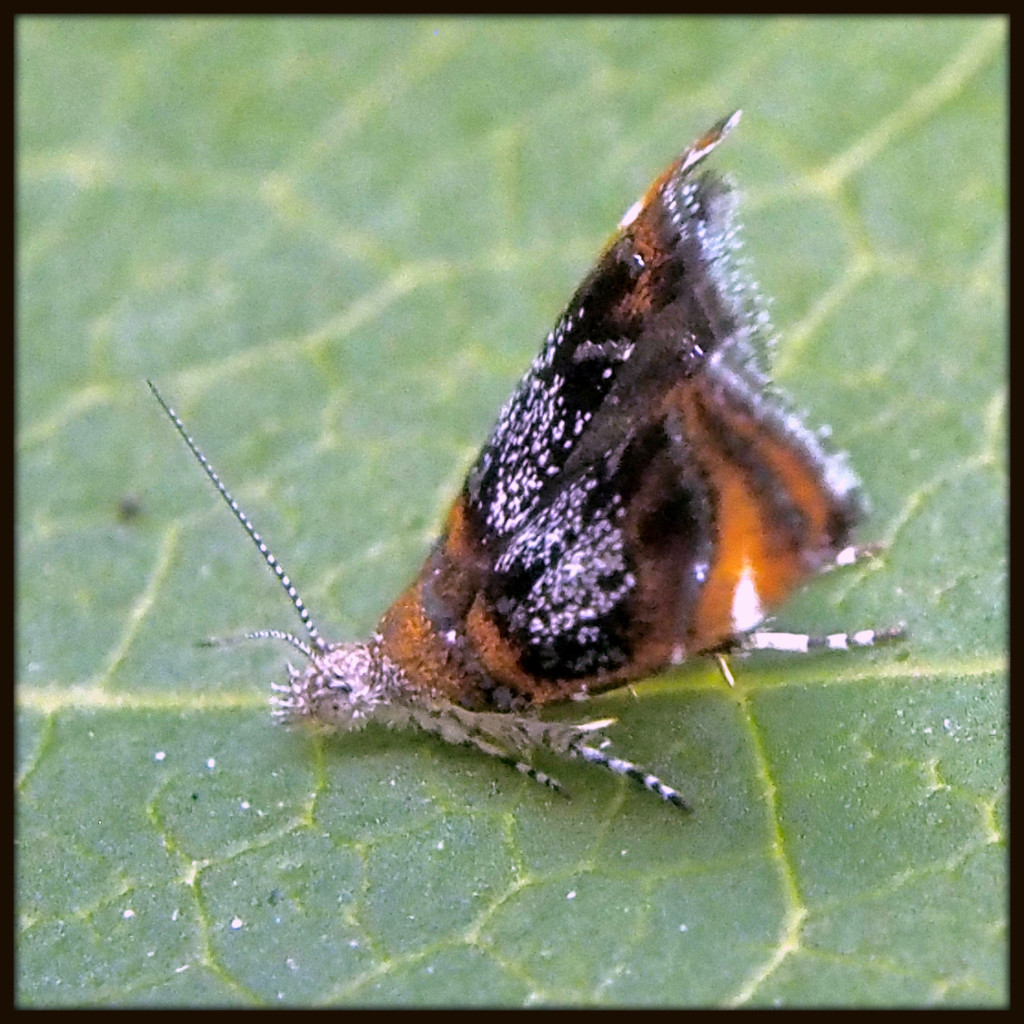An old spiderweb, its occupant long gone, glows in the sunlight of a late summer afternoon along Piney Woods Church Road.
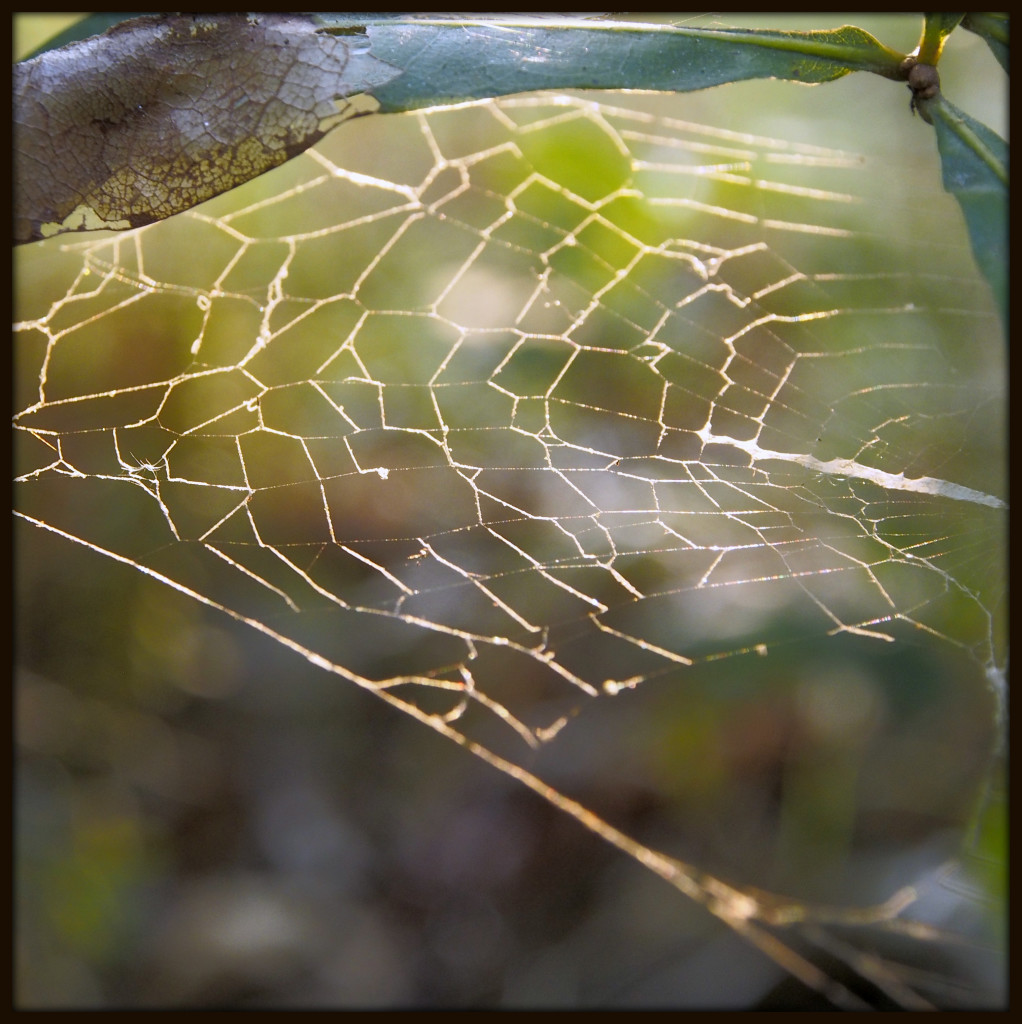
An old spiderweb, its occupant long gone, glows in the sunlight of a late summer afternoon along Piney Woods Church Road.

Our yard on Rico Road has become a haven for White-Tailed Deer (Odocoileus virginianus). Going up the driveway around sunset, I sometimes find half a dozen deer about. This time of year, I will often glimpse one or two hanging out beneath our pear tree, undoubtedly waiting for the pears to ripen. Lately, I have seen spotted fawns in the front yard. For all that, though, I have rarely seen deer along Piney Woods Church Road. Tonight, at last, almost as an afterthought — I had already taken plenty of photos on my walk, plus spent half an hour chatting with a friend who lives along the road — I glimpsed a pair of deer in a roadside pasture. By the time my camera was at the ready, the closer of the two was already preparing to flee. Still, the result is a pleasant image — and, at long last, deer are included among the Piney Woods Church images. There are so few wild mammal photographs out of the 187 so far. I can think of only one other photograph, in fact — and Eastern Gray Squirrel. Insects tend to be slower and more willing to sit still.

On a hot and brightly sunny mid-afternoon, I captured this hoverfly resting for just a moment on a sweetgum leaf. I enjoyed watching it hover in midair, and imagined taking its picture in flight — ah, well, that is for another day. A bit further down Piney Woods Church Road, I glimpsed another one, busily gathering nectar from the ever-blooming daisy fleabane.
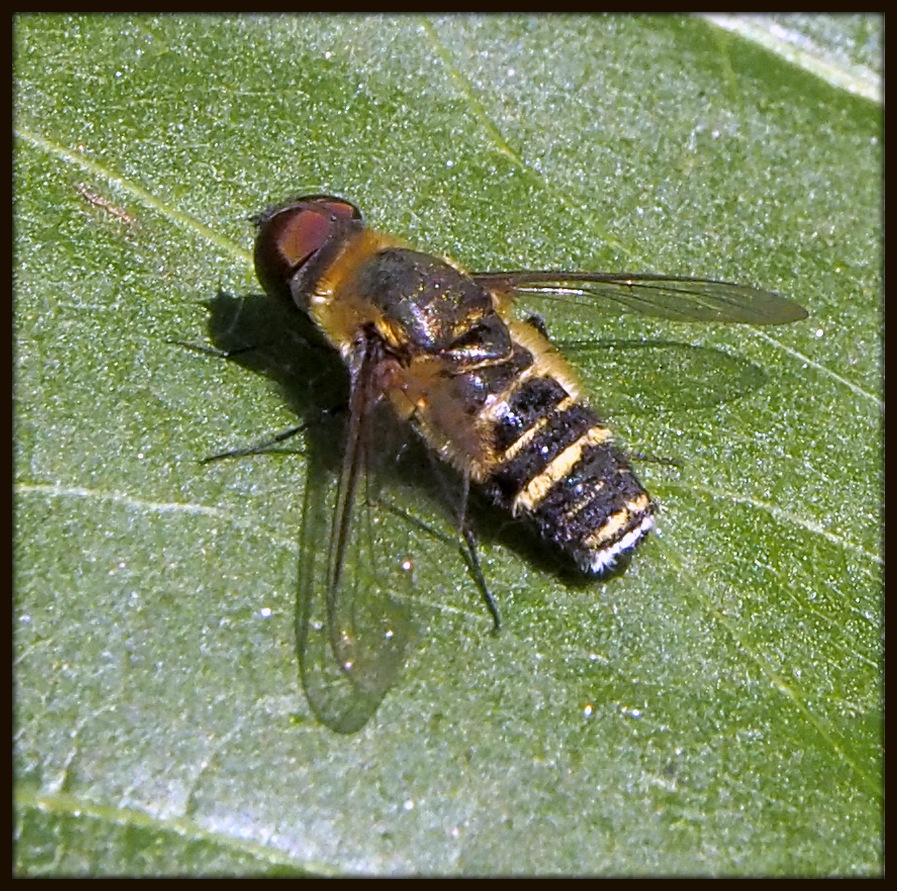
Shortly after 7 am today, I stepped outside and was impressed by how cool it had become overnight — I nearly felt a chill, suggesting a temperature around 60 degrees F. I set off excited at the prospects of capturing a suitable 4th of July image. I recalled some Independence Day bunting along a neighbor’s wood fence about halfway down Piney Woods Church Road, and thought I would use one as foreground for a wide-angle landscape photograph, something I practically never do. I took several photos of an ancient tulip poplar in a pasture, with the decoration in the foreground as intended, but the lighting was poor because the morning sun had not yet topped the trees across the road. I thought I would try a different photo using one of the other decorations, but the wind had blown it upside-down over the top rail of the fence. I righted it, discovering this caterpillar as I did so. What a marvelous gift for this Independence Day! He (or she) had even positioned himself (or herself) on one of the stars, inviting a portrait. The caterpillar is almost certainly a Banded Tussock Moth (Halysidota tessellaris), a generalist feeder that is fairly common across the eastern half of North America. Today I broke with tradition to post two photographs; I cannot decide which one I prefer. Any votes?

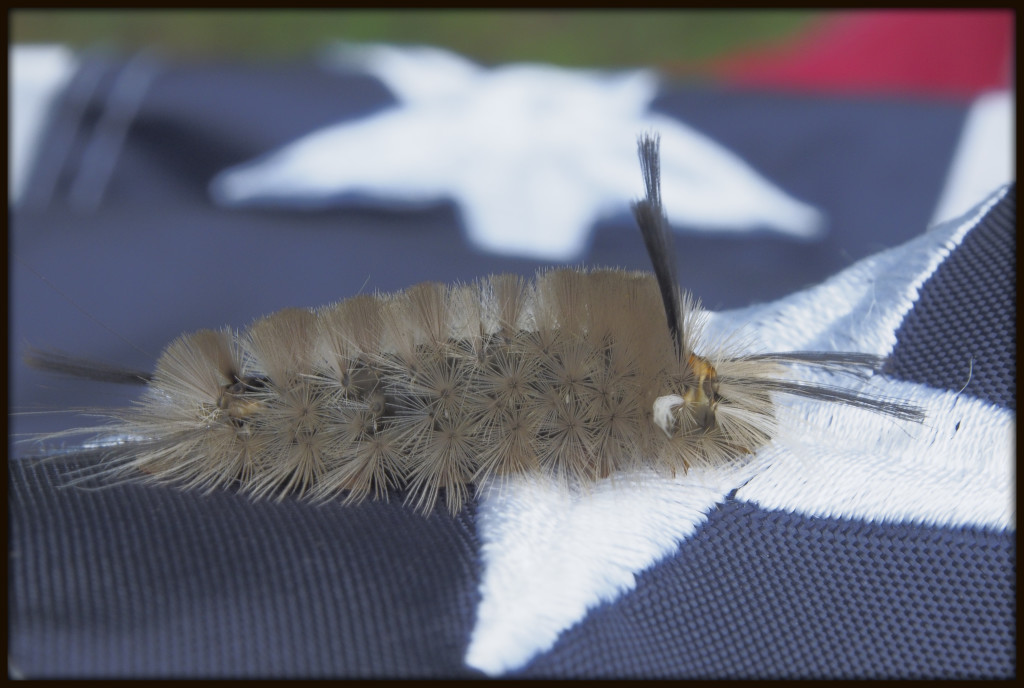
I arrived at Piney Woods Church Road this morning a bit bleary after a late night tutoring and grading online students in the universities where I teach. I was hopeful that something fascinating would come my way to photograph. I am still figuring out my new macro lens, and I strolled up and down the road, in search of subjects. A small gold fly was somewhat obliging, but otherwise, there was nothing to explore but green leaves. I never tire, though, of the patterns of light and shadow on leaves, particularly when they are backlit early and late in the day. So I wandered about, figuring out manual focus on my lens and taking lots of pictures of leaves. My favorite of the lot is the one below, a close-up of two leaflets of poison ivy. The space between them evokes a river as seen on a satellite image, with the leaflets forming the adjacent land.
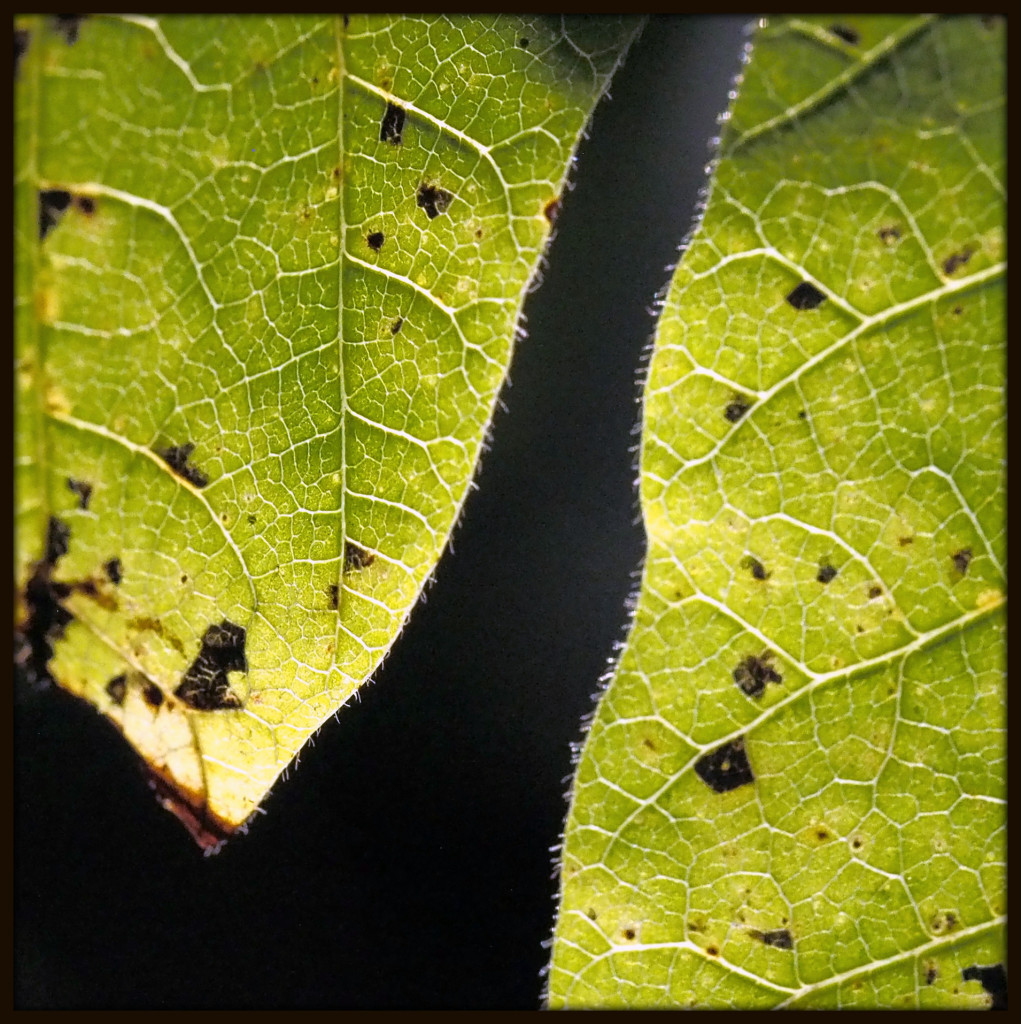
Late this afternoon, I set out into the humid haze with my latest lens: a 60 mm f/2.8 prime macro. There is a learning curve with this lens, and the light was far from ideal. Still, I was able to find a semi-cooperative juvenile katydid to experiment on. This portrait is my favorite from the “katydid session”.

This afternoon, I slipped my 12-50 mm zoom lens back on the camera, as a respite from Lensbaby, and headed off down Piney Woods Church Road. It was a brutally humid late afternoon, and I felt like I was leaving a trail of perspiration behind me as I walked up to Hutcheson Ferry Road and back again. On my return, I paused to take a few photographs of ripening wood oats beside the roadway. The afternoon light shone through them beautifully, yielding this image.
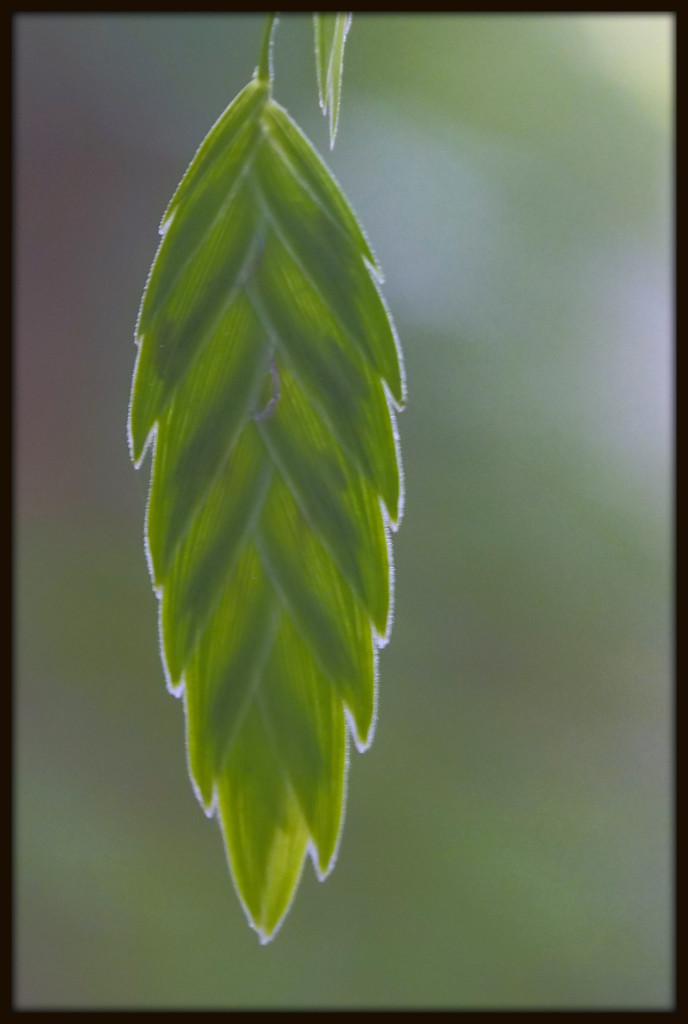
After a spell of near-monsoonal rain this afternoon, I set out on another expedition with my Lensbaby Composer Pro with Sweet 35 optic. This time, instead of the 8 cm macro converter from yesterday, I used a 16 mm one. That translated into still more close-up photographs than the ones I took yesterday. I spent over an hour wandering Piney Woods Church Road, a goodly part of it trying to focus on water droplets. I discovered (no great surprise here) that the water droplet comes into focus twice: once the exterior surface is in focus, and at a different point when the central reflection was more or less in focus.
On my way back home, I also casually snapped this shot of a goatsbeard (I think), its bloom finished, but still retaining beauty and mystery.

Here is another photograph with my Lensbaby Composer Pro with Sweet 35 Optic earlier this afternoon. A rain storm had ended; as I type this, another, more dramatic, storm is waiting on our doorstep. This was an unusual case (for me, at least) in which an image I found passable in color looks quite lovely and a bit mysterious converted to black and white. A droplet of water clings to a grapevine; a second water droplet on the same vine is an out-of-focus spot of brightness to its left.
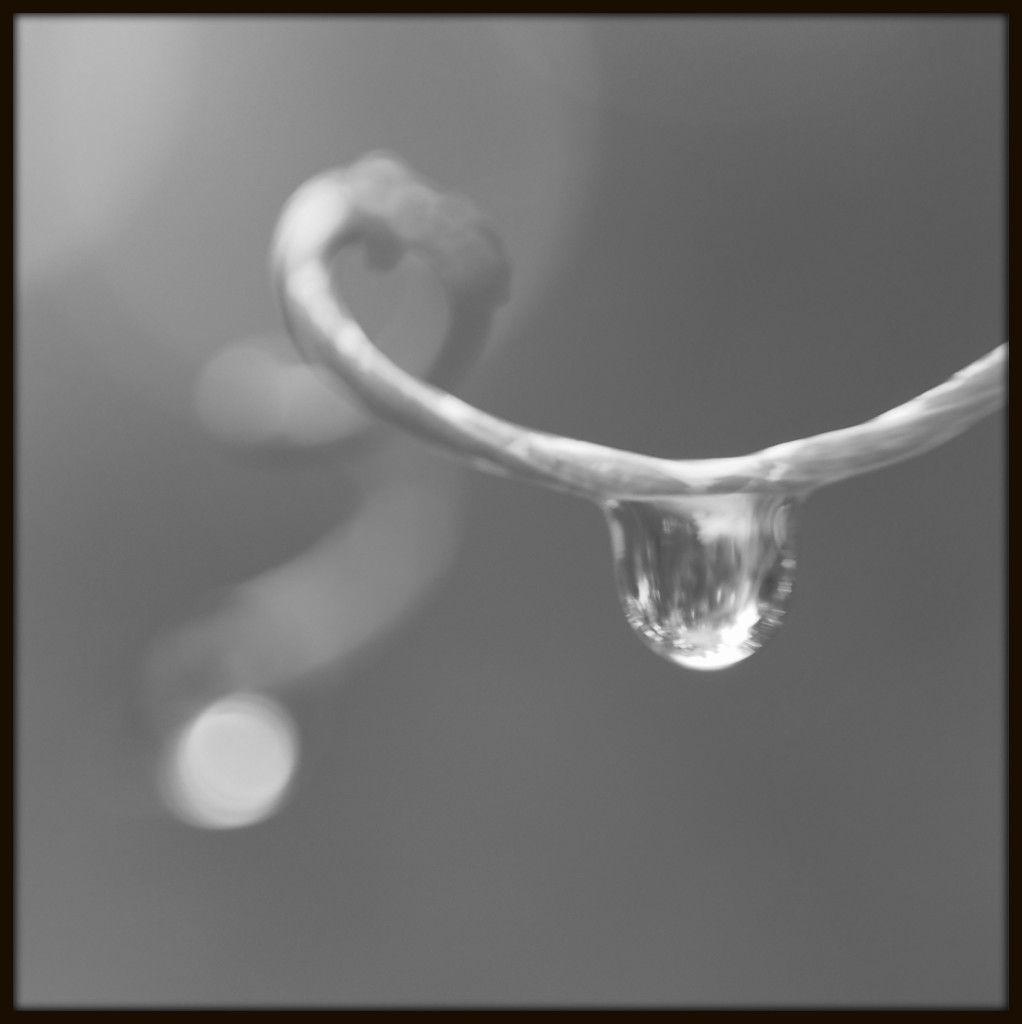
As I turned onto Piney Woods Church Road this afternoon, I noticed this tiny orange and black moth, with a wingspan of about a quarter inch, resting on a the leaf of a sapling. More precisely, this moth appears to be doing insect yoga. With some rapid-fire help from BugGuide folks on Facebook, I was able to identify it as the Skullcap Skeletonizer Moth (Prochoreutis inflatella). My Internet research has failed to reveal why it strikes this particular pose.
